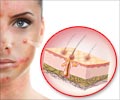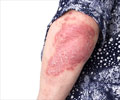Information about Ozenoxacin
Generic Name : OzenoxacinUp-to-date prescription details regarding Ozenoxacin are provided here.
Pronunciation : oz-en-OX-a-sin
Learn the correct pronunciation of the Ozenoxacin, understand it's uses, recommended dosages, its indications, how to take, when to take, when not to take, side effects, special precautions, warnings and its and its storage instructions.You will also find a list of the medication's International and Indian brand or trade names, as well as its pricing information. For verification of the information presented on this page or for additional clarifications, it's advisable to consult your doctor.
Therapeutic Classification : Antibiotics- Topical
Trade Names/Brand Names of Ozenoxacin
India :
Xepi, Ozaenex
Overview of Ozenoxacin
• Ozenoxacin cream is an antimicrobial approved by USFDA in December 2017 as an external application to treat impetigo.Why is Ozenoxacin Prescribed? (Indications)
Ozenoxacin cream for topical use is prescribed for the external treatment of impetigo in adult and pediatric patients who are 2 months of age and older which is caused by Staphylococcus aureus or Streptococcus pyogenes.Ozenoxacin is found to be effective against certain bacteria which are resistant to currently used quinolones or fluoroquinolones antimicrobial agents.
It works by inhibiting certain bacterial DNA replication enzymes such as DNA gyrase A and topoisomerase IV thereby inhibiting bacterial cell division resulting in antibacterial activity.
When should Ozenoxacin not be taken? (Contraindications)
Ozenoxacin should not be used in patients with-• Allergy to ozenoxacin
• Infants below 2 months of age
• Skin Infections other than impetigo
What is the dosage of Ozenoxacin?
• The dose and duration of ozenoxacin treatment depend on the individual patient’s condition.• The marketed ointment contains 1% of ozenoxacin as the active ingredient.
For treating impetigo:
• Adults and children above 2 months of age - Apply externally twice daily for a duration of 5 days.
How should Ozenoxacin be taken?
• Ozenoxacin comes as a cream which has to be applied as a thin layer to the affected area of the skin and rubbed gently.• The treatment area should be covered with a gauze bandage or a sterile dressing after ozenoxacin cream is applied.
What are the warnings and precautions for Ozenoxacin?
• Discontinue the treatment with ozenoxacin cream if any microbial overgrowth of nonsusceptible bacteria or fungi occurs.• Care should be taken to avoid contact with eyes, mouth, nose, groin or genital area. In such cases, the area should be washed with water thoroughly.
• If the infection does not subside or if it gets worse consult the physician immediately.
• Do not stop using the cream before the advice of the physician even if the symptoms have resolved or improved.
• Hands should be washed thoroughly with soap and water after applying ozenoxacin cream.
• Do not let anyone use the ozenoxacin cream without the approval of the physician.
What are the side effects of Ozenoxacin?
• Skin irritation• Rosacea
• Seborrheic dermatitis
What are the other precautions for Ozenoxacin?
• Do not exceed the number or duration of doses prescribed.• In case of overdose either by accidental intake or applied externally, patients are treated symptomatically as there is no specific antidote.
What are the Drug Interactions of Ozenoxacin?
• Not known.What are the storage conditions for Ozenoxacin?
• Store at room temperature at 20°C to 25°C.• Protect from excess heat and moisture.
• Keep away from the reach of children.











